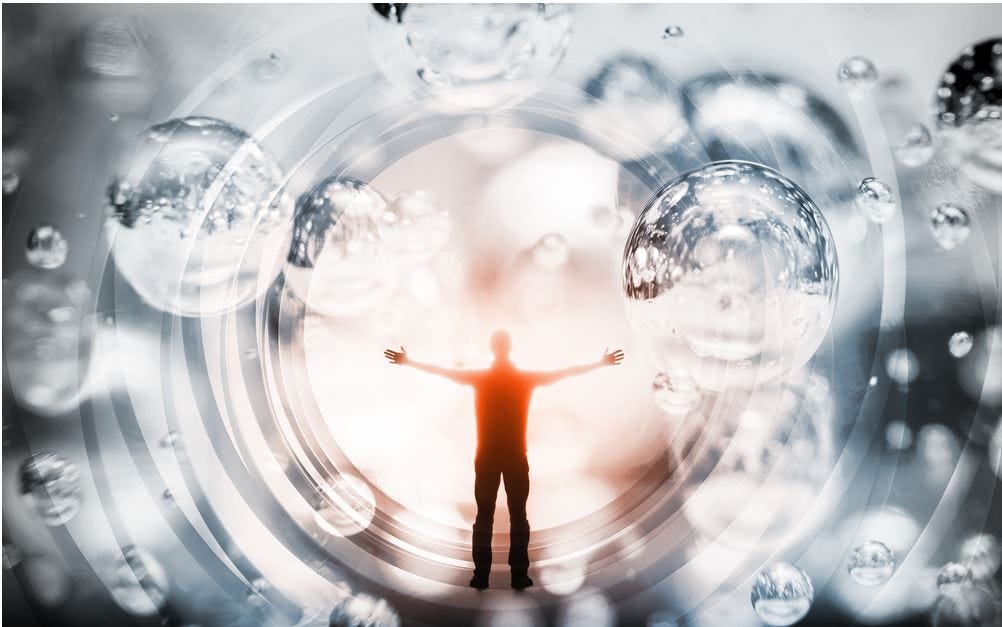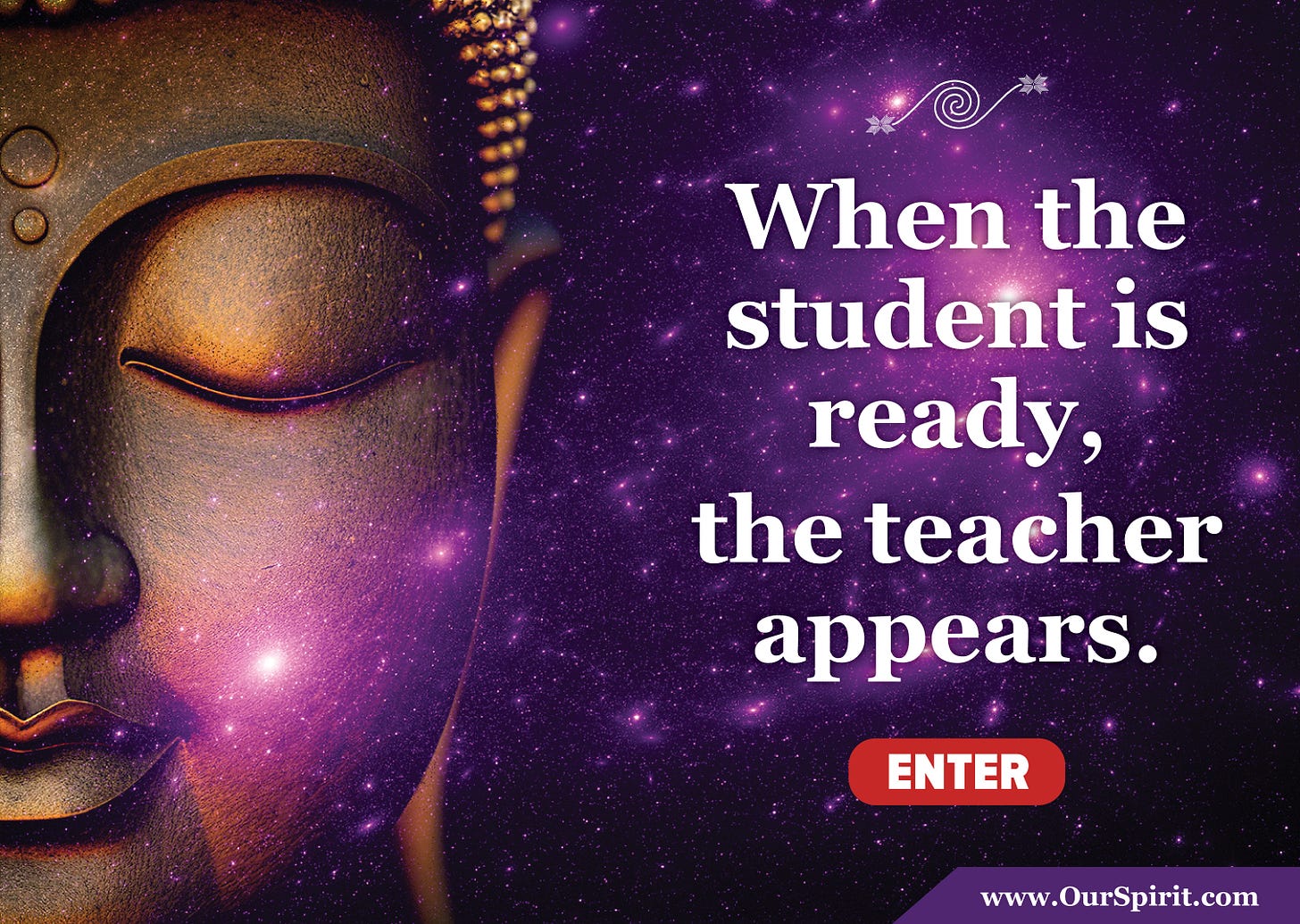When the Student is Ready, the Teacher Appears
Ascension to higher consciousness lies in self-transformation
In anthroposophy, Rudolf Steiner describes the ascent to higher states of consciousness as a deliberate, transformative process that unfolds through the development of the human being’s spiritual nature. This journey involves refining one’s physical, etheric, astral, and ego (or "I") components—the fourfold constitution of the human being—and awakening latent spiritual faculties to perceive and participate in higher realms of existence. Below is an outline of how this ascent occurs according to anthroposophical teachings:
1. Preparation through Self-Development
The foundation for ascending to higher consciousness lies in self-transformation. Steiner emphasized that the human being must first prepare their inner life:
Moral Refinement: Cultivating virtues like patience, humility, truthfulness, and love purifies the soul and aligns it with higher spiritual impulses. Without ethical grounding, higher perception can become distorted or harmful.
Control of Thoughts and Emotions: Developing clarity and mastery over thinking, feeling, and willing (the threefold soul activities) creates a stable inner vessel for spiritual growth.
Detachment: Reducing attachment to material desires and egoistic impulses allows the soul to turn toward higher realities.
2. Development of Spiritual Faculties
Steiner taught that higher states of consciousness—imagination, inspiration, and intuition—are achieved by awakening "organs of spiritual perception" within the soul and spirit. This process involves specific stages:
Imaginative Consciousness: The first stage beyond ordinary waking consciousness, achieved through meditative exercises (e.g., visualizing a plant’s life cycle or symbolic images like the "rose cross"). This enables perception of the etheric world—the realm of life forces—through living, pictorial thought.
Inspirative Consciousness: A deeper stage where the practitioner perceives the astral realm—spiritual beings and forces—through "hearing" inner spiritual resonances or meanings behind phenomena. This requires further detachment and receptivity.
Intuitive Consciousness: The highest stage, involving direct identification with spiritual beings or truths. Here, the ego ("I") unites with the essence of what it perceives, transcending separation between self and the spiritual world.
3. Meditative and Esoteric Practices
Steiner outlined practical exercises to facilitate this ascent, particularly in works like How to Know Higher Worlds (free copy inside link):
Concentration: Focusing intensely on a single object or thought strengthens the will and quiets the mind, enabling it to become a tool for spiritual perception.
Meditation: Contemplating spiritual ideas, verses, or symbols (e.g., "Light streams from the heights") elevates consciousness beyond sensory experience.
Retrospective Exercise: Reviewing the day’s events in reverse order enhances self-awareness and detachment from the physical body’s influence. These practices gradually transform ordinary thinking into a dynamic, living process capable of perceiving supersensible realities.
4. Engagement with Spiritual Science
Understanding the structure of the human being and the cosmos, as presented in anthroposophical teachings, supports the ascent. Key concepts include:
The interplay of the physical body (material vessel), etheric body (life forces), astral body (soul consciousness), and the "I" (eternal self).
The evolution of consciousness through planetary stages (e.g., Saturn, Sun, Moon, Earth), which contextualizes the human being’s spiritual potential. This knowledge provides a map for interpreting experiences in higher states.
5. Encounter with the Guardian of the Threshold
A pivotal moment in the ascent is meeting the "Guardian of the Threshold," a spiritual being or experience representing one’s lower nature (e.g., fears, weaknesses, unresolved karma). Crossing this threshold requires courage and self-honesty, marking the transition from ordinary to spiritual consciousness. Steiner distinguished between the "Lesser Guardian" (personal shadow) and the "Greater Guardian" (cosmic responsibilities), each signifying deeper stages of initiation.
6. Integration of Body, Soul, and Spirit
Higher consciousness emerges as the human being harmonizes their threefold nature:
Thinking: Becomes imaginative and perceptive, accessing spiritual truths.
Feeling: Aligns with universal love and compassion, resonating with the astral plane.
Willing: Transforms into selfless action guided by the "I," serving the spiritual evolution of humanity. This integration allows the individual to participate consciously in the spiritual world while remaining active in the physical.
7. Service to Humanity and Cosmic Evolution
Steiner stressed that the purpose of ascending to higher consciousness is not personal gain but contributing to the evolution of humanity and the cosmos. As one progresses, he/she takes on greater responsibility for the spiritual welfare of others, aligning with the Christ impulse—a central force in anthroposophy that fosters unity and redemption.
Begin Your Journey to Spiritual Enlightenment
There are many paths to the mountain top, but Douglas and I found that anthroposophy offers a disciplined path where the human being ascends from ordinary waking consciousness (tied to the physical senses) to imaginative, inspiration, and intuition, ultimately uniting with the spiritual hierarchies and the divine. This process is gradual, requiring patience and persistence, and is seen as a natural potential within every individual, activated through effort and spiritual striving. Steiner viewed this ascent as part of humanity’s evolutionary destiny, unfolding fully in future epochs but accessible now through esoteric training.







THANKYOU! ❤️🙏❤️🦁🌷...
I find this to be true. thank you for everything, I see that we are all teachers teaching each other also. it is the teacher who learns the most in the classrooms, thus we all naturally should become teachers, sharing what we learn. in the near future we will allow, encourage the students teach one another.